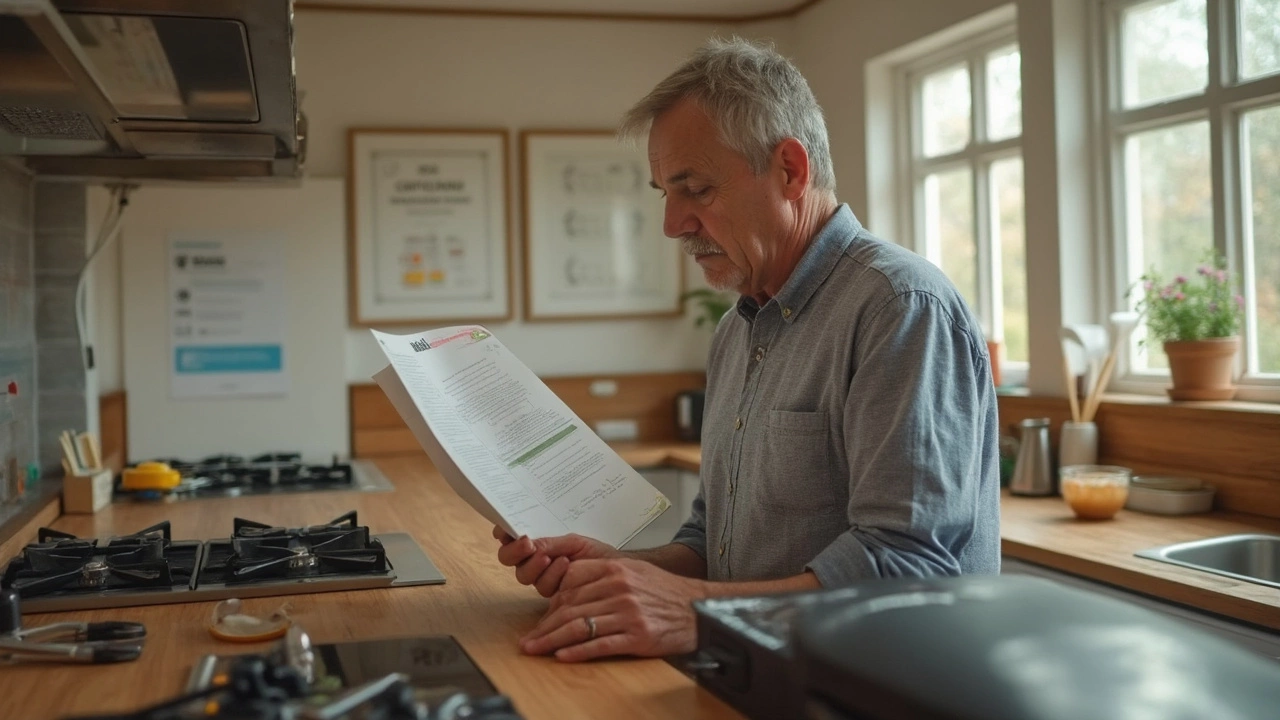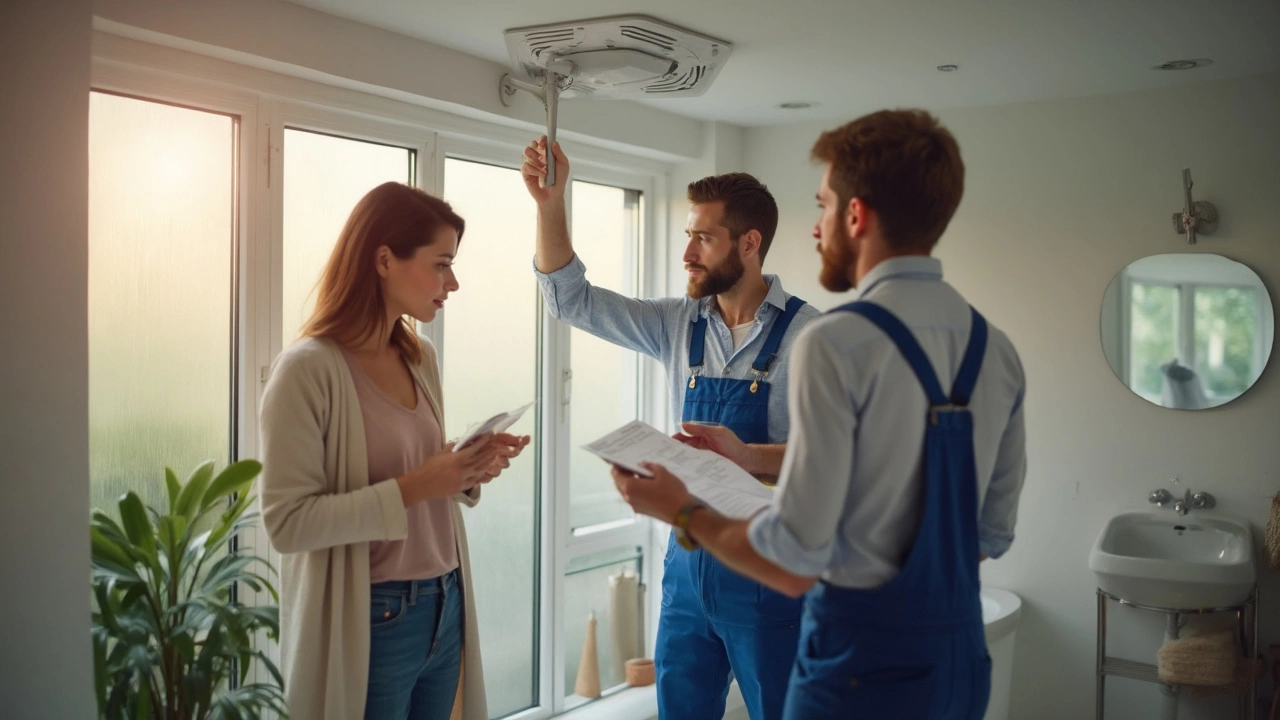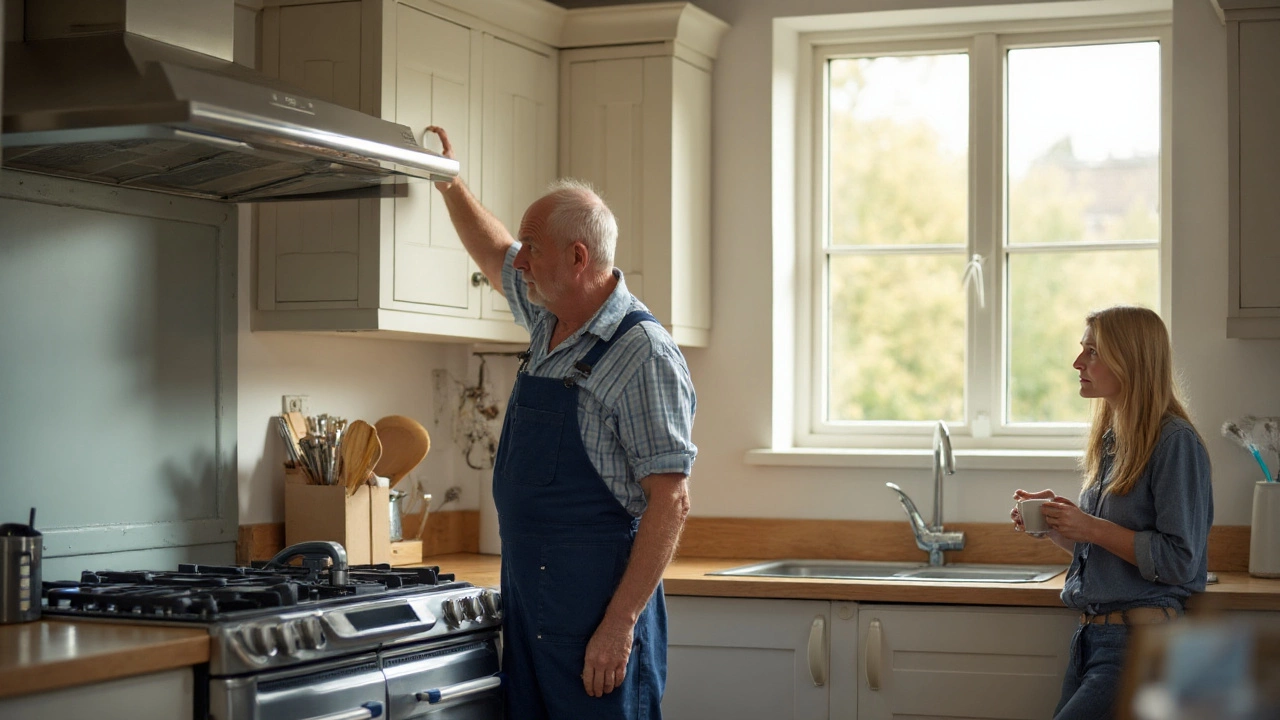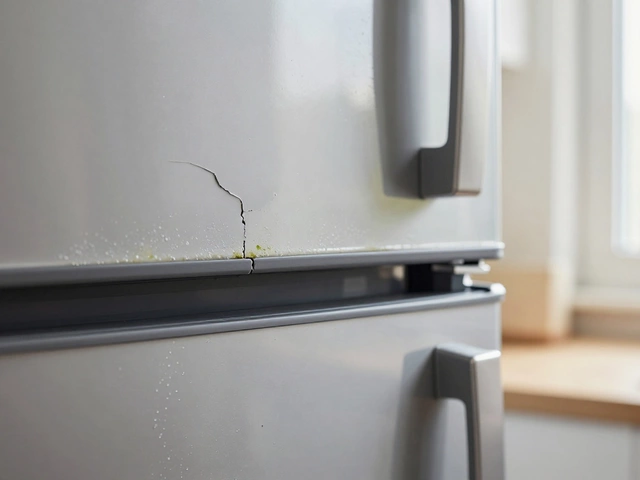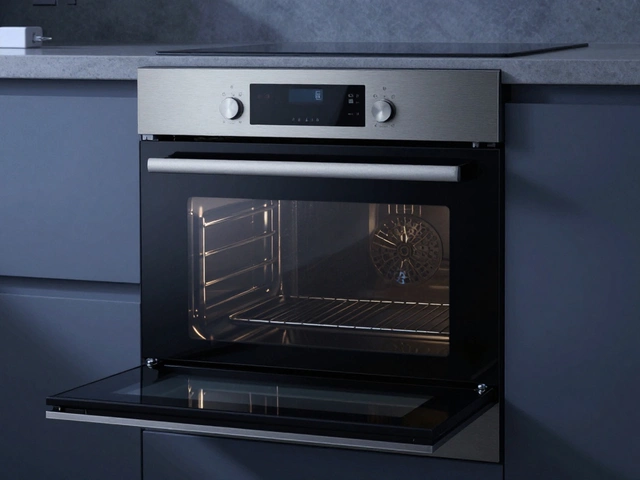Honestly, electric hobs can seem pretty straightforward—just unplug one, plug in the next, and done, right? If only it were that simple. Swapping out an electric hob is not like switching a lamp. You’re dealing with high voltage, hardwired connections, and strict safety rules. The risks are real, not just a threat your dad used to freak you out with.
Here’s the thing: replacing an electric hob usually means messing with your home's fixed wiring. It's not just about pulling a plug. Most hobs are hardwired, which means they're connected directly to your mains—no ordinary socket involved. This immediately pushes the job into tricky and sometimes risky territory, especially if you aren’t sure about wiring colours or which circuit breaker to switch off. Plus, it’s about more than just safety. UK law has pretty clear rules about who should do these kinds of jobs.
- The Basics: What's an Electric Hob?
- Do You Legally Need an Electrician?
- What Could Go Wrong?
- Tips for a Safe Hob Replacement
- When to Call the Pros
The Basics: What's an Electric Hob?
If you cook at home, you've probably seen or used a electric hob. It's basically the flat, panel-like part on your kitchen worktop where you boil, fry, or simmer food. Unlike gas hobs, there's no open flame—just electric elements hidden under a glass or metal surface that heat up when you turn the dial or press the buttons.
Most electric hobs in the UK are hardwired straight into your home's electricity supply. They don’t use a standard plug; instead, they're wired with thicker cabling for safety. That’s because they pull a lot more power than your blender or kettle. A typical electric hob uses 30-45 amps, far above what a usual plug can handle.
There are two main types of electric hobs you'll find in kitchens:
- Ceramic hobs: These are the shiny, glass-like hobs. They're easy to wipe clean, but generally slower to heat up compared to induction models.
- Induction hobs: These work differently—they heat the pan directly using magnetic fields. They're more energy-efficient and heat up super fast, but you need the right kind of cookware (basically, anything magnet sticks to).
Electric hob models often come with features like touch controls, timers, and child locks. While these gadgets make cooking easier, they can also mean a more complicated fitting job, especially if you’re replacing an older, simpler hob.
| Type | Power Draw | Common Features |
|---|---|---|
| Ceramic | Up to 6.5kW | Simple dials, residual heat indicators |
| Induction | Up to 7.2kW | Touch controls, timers, safety switches |
It’s this powerful, hardwired design that makes electric hob repair or replacement less of a DIY task and more something to really plan out ahead of time.
Do You Legally Need an Electrician?
This is where things get real. In the UK, swapping out a electric hob isn’t always a DIY job you can just tackle after watching a quick video. It comes down to law—specifically, the “Part P” section of the Building Regulations. That basically says any electrical work in the kitchen that involves connecting to the mains (like fitting a new electric hob) must be done by someone who knows what they’re doing. Most of the time, that means a qualified electrician.
Kitchens are classed as ‘special locations’ because water and electricity don’t mix well. That makes the rules even stricter. If you make a dodgy connection, you’re not just risking a shock or a blown fuse—the place could catch fire. Insurance companies really care about this stuff. If you try to claim for kitchen damage and it turns out your electric hob was wired by someone unqualified, your claim could be binned in seconds.
There’s also notification rules. For most electric hob jobs, the law says the work must be signed off by your local authority, unless your electrician is registered with an approved scheme (like NICEIC or NAPIT). DIYers rarely meet these requirements.
- If your hob plugs into a standard 13-amp socket (rare for full-size hobs), you might be allowed to do it yourself—but that’s not most setups.
- If the hob is hardwired, you legally need a ‘competent person’ to handle the wiring and connection.
- No matter what, all connections need proper isolation and testing to make sure they're safe. Slip up here, and you’re breaking the law.
According to a recent Electrical Safety First report, more than 12,000 UK house fires a year are blamed on faulty electrical installations. That includes badly fitted electric hobs. It’s not just red tape—this stuff matters for you and everyone in your house.
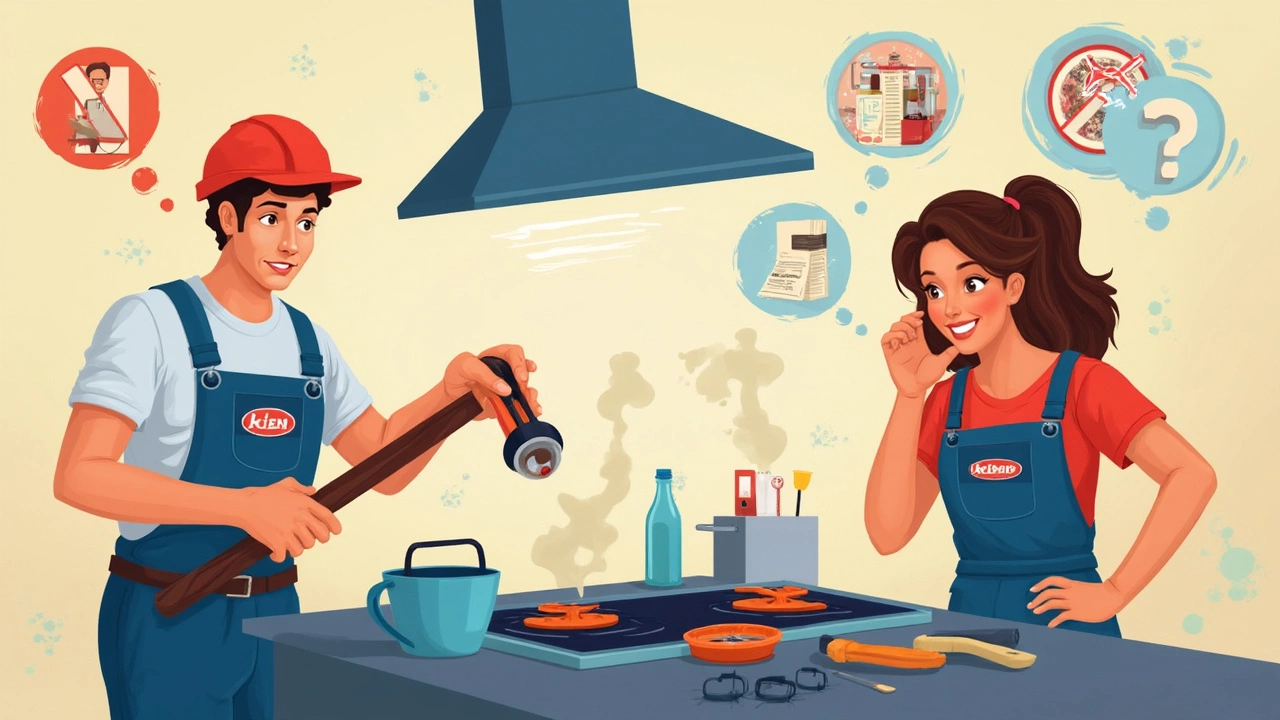
What Could Go Wrong?
Messing with an electric hob isn’t like changing a toaster. When folks try to do it themselves, things can get dicey. The most obvious worry is electric shock. We’re talking about up to 240 volts—enough to seriously hurt you, or worse, if you get it wrong for even a second.
You might also trip the circuit breakers or blow the main fuse if you mix up the wiring. This can knock out power not just to the kitchen but sometimes the whole house. It gets worse if you accidentally connect live wires together. That can spark, melt cables, or even start a fire—yes, kitchen fires sometimes start from bad appliance installs.
- Improper connections: Even something as simple as using the wrong cable or missing a terminal screw could cause the wires to overheat. Over time, that can lead to a burning smell or, in really bad cases, a full-on fire.
- Void warranty: If you don’t have an official electrician handle the job, you could lose the electric hob warranty or even void your home insurance. Most manufacturers and insurers check paperwork after claims are made.
- Illegal work: Some local rules (especially in the UK under Part P) make DIY work on kitchen circuits basically illegal unless you get it checked by a licensed electrician. Getting caught could mean fines or, worse, trouble selling your home later if the electrics don’t pass inspection.
Still not convinced? According to a 2023 report from Electrical Safety First, over 60% of home electrical fires in the UK started in the kitchen, with faulty or badly installed appliances often to blame. That’s a stat no one wants to be part of.
If you think skipping the electrician saves money, it could cost more in the long run if you need rewiring, repairs, or if anything goes up in smoke. Play it safe with electric hob replacement—don’t cut corners or take unnecessary risks.
Tips for a Safe Hob Replacement
Before you even touch your old electric hob, safety has to be the priority. This isn’t the time to take wild guesses or rely on YouTube hacks. If you’re thinking about going the DIY route, here’s what needs to be top of mind.
- Turn off the power at the mains. Don’t just trust the switch by the hob. Head to your consumer unit (fuse box), find the circuit for the hob, and switch it off. Double-check by testing the hob—no power, no lights, no heat means it’s actually off.
- Check the wiring. Most electric hobs in the UK are hardwired and may not have a plug. If you see a thick cable running into a fused switch, you’re looking at fixed wiring. Do not disconnect anything unless you know exactly what each wire does. Wiring colours changed around 2004—brown and blue are modern, old ones are red and black—so don’t mix them up.
- Keep everything dry and clean. Water and electricity never mix. Make sure the area is dry, clean, and you have enough light. Dropping screws into the wiring cavity is a nightmare nobody wants.
- Know your circuit size. Electric hobs are power-hungry. Typical models draw 6kW or more, so you need a dedicated 32 amp circuit. Using the wrong circuit risks overloading, which can cause fires or tripped breakers.
- Read both manuals. The old hob’s installation section can show what you’re about to face. The new hob’s manual details exactly how it’s supposed to be wired in. Manufacturers aren’t kidding when they say “follow the instructions.”
You might be surprised by how many fires start from bad electric hob repair jobs. According to the UK Home Office's 2023 fire statistics, roughly 14% of accidental house fires in kitchens traced back to faulty wiring and DIY appliance swaps.
| Step | What To Double Check |
|---|---|
| 1. Power Off | Main switch is off, hob doesn’t power up |
| 2. Current Rating | Circuit matches new hob’s requirements |
| 3. Wiring Scheme | Wire colours and positions match manual |
| 4. Fixings | Hob is seated flat and secure in worktop |
| 5. Test Before Use | All functions work, no sparking or burning smell |
If you hit any doubt—wrong wire, strange connection, missing earth—stop and call a qualified electrician. It’s not worth guessing when it comes to high-voltage supplies.
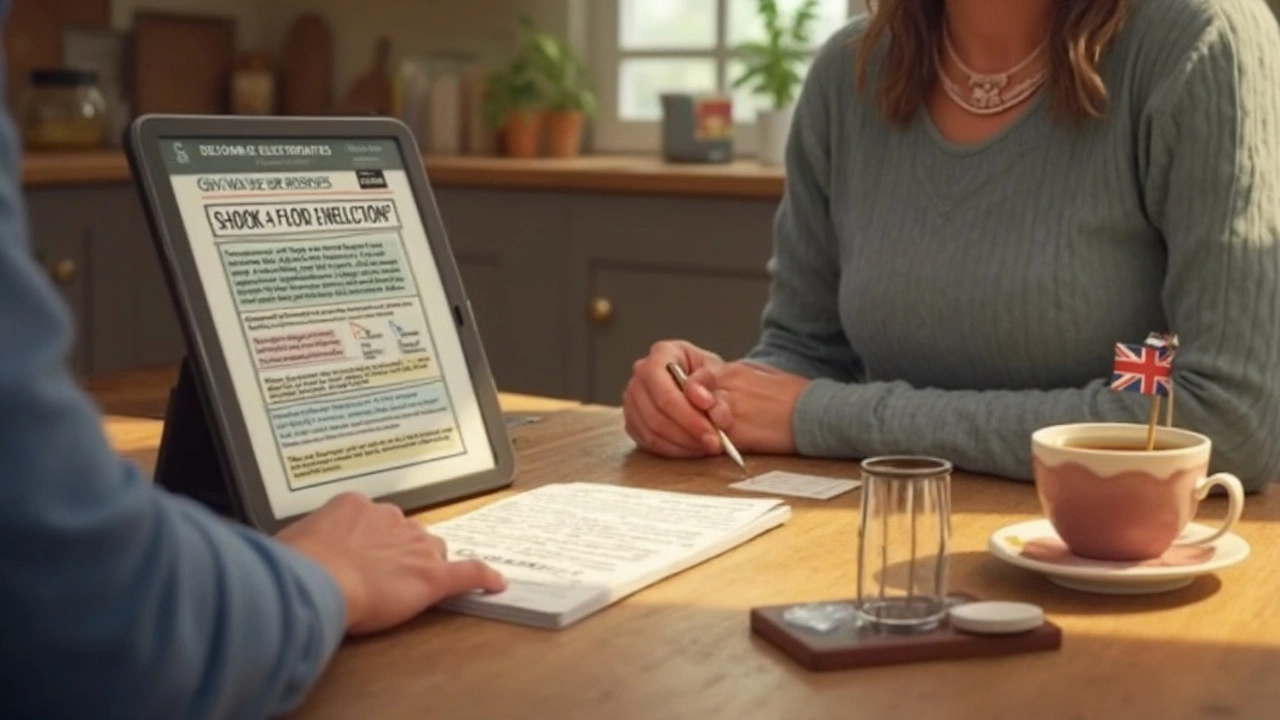
When to Call the Pros
If you’re looking at your electric hob and wondering whether it’s a DIY kind of day, stop and think before grabbing that screwdriver. There are plenty of good reasons to call in a qualified electrician when you want to replace or repair an electric hob. This isn’t just about convenience—it's about legal rules, safety, and doing the job right the first time.
Let’s break down when you should absolutely get the professionals involved:
- The new hob has different power ratings or wiring: If your new hob uses more power or has different wiring from your old one, a pro will make the correct connections and prevent fires or blown fuses.
- You’re unsure about your fuse board or circuit: If you don’t know which breaker controls the hob, or your fuse box looks like a tangle of spaghetti, let an electrician handle it.
- Legal requirements: In the UK, any work involving hardwiring an appliance in the kitchen (like an electric hob) usually falls under "notifiable work". That means it must be reported to building control or done by a registered electrician under Part P of the Building Regulations. Getting this wrong can mean you invalidate your home insurance, or worse, cause an accident.
- New cable runs needed: If you have to install new wiring, move sockets, or reroute the old setup, call an expert. Running new cable isn’t just plug-and-play—it needs planning and know-how to avoid mistakes that lead to overheating or shocks.
- You just don’t feel confident: Not sure what that mysterious green-yellow wire is for? Better to pay for a pro than pay for a hospital visit later.
Some people want stats, so here’s something solid: according to Electrical Safety First, nearly half of severe electric shocks in UK homes relate to kitchen jobs, with many caused by incorrect installation of appliances like electric hobs. Plus, failing to get an installation certified could make it tricky to sell your house down the line, as buyers often want to see proof the work was done safely and legally.
| Situation | DIY? | Call a Pro? |
|---|---|---|
| Simple like-for-like swap, confident with electrics | Maybe* | Recommended |
| Upgrading to higher power hob | No | Yes |
| Moving hob location | No | Yes |
| Unknown wiring setup | No | Yes |
| Legal certification needed | No | Yes |
*Even for the simplest switchover, most folks go pro for peace of mind and to keep everything up to code. You want to cook dinner, not deal with flickering lights and blown fuses. And don’t forget, a qualified electrician will test the connections, check that earthing is good, and make sure your electric hob is safe for long-term use. You can focus on the cooking, not the wiring.
